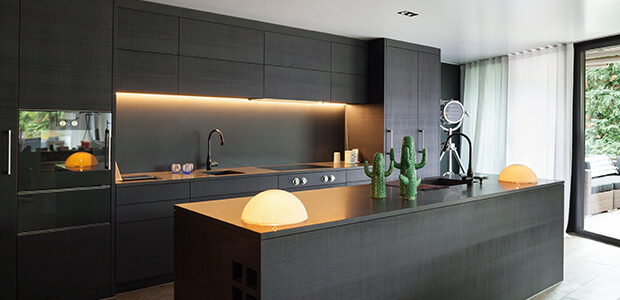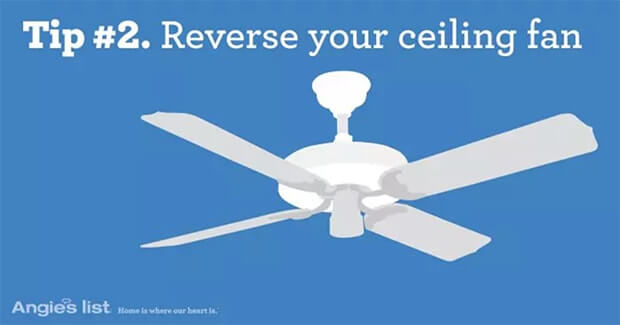7 Eco-Friendly Home Hacks to Save Energy
You can save on energy and utility bills in many ways. A home energy audit can work wonders, and installing energy-efficient appliances makes a huge difference over time. But every little bit helps, and it adds up fast. What if you could snip your energy budget with a few handy tricks that you can do easily? Maybe something you could do right NOW?
Find Top-Rated Energy Auditors
Search Now1. Protect south-facing windows
The biggest impact on your home’s heat level in the summer comes from the south side of the sky, where the sunlight hits at the harshest angle. South-facing windows require more attention for this reason. If possible, install double-pane windows that block heat entry.
Physical barriers also prove highly effective, according to the Department of Energy. A light-colored awning is good way to reduce heat gain, and barring that, blinds or reflective films. If all this is too complicated or costly, put up some drapes. The DoE advises that medium-colored drapes backed with white plastic reduce heat gain by 33 percent.
You can also consider planting trees and bushes. The shade they provide will block sunlight and heat more effectively than almost any other method.
2. Reverse your ceiling fan
Most ceiling fans have a switch to reverse the direction. It might not be obvious, but run your hand along the fan’s main body and you should be able to find it. From your point of view looking up at it, you want the fan to run counter clockwise at a higher speed during the summer. This forces room air down towards you and creates the cool wind feeling. When you run it clockwise at a low speed, it pulls the air in reverse, drawing the room air up to the ceiling, cycling air near the ceiling back down, and pushing air towards the walls. Since heat rises, this means warm air near your ceiling is moved back into the main part of the room.
3. Avoid energy vampires
Garlic and silver bullets won’t get rid of the creatures of the night sucking up your home’s lifeblood and cranking up the power bills, but a little preventative action might. The DoE says many appliances in your home continue to draw small amounts of energy when they’re plugged in and turned off — home energy vampires, in other words. The solution here is simple: Unplug what you can and use wall strips on what you don’t want to unplug on a regular basis. Curling irons burn small amounts of energy while plugged in, so leave them unplugged.
Your kitchen appliances draw small amounts of energy. Coffee makers, toaster ovens, microwaves and other small appliances should be unplugged or turned off via wall switch.
The thirstiest energy vampires make their lair in your living room. TVs, DVRs, cable boxes, video game consoles and computers all slurp up energy while turned off. To solve this, plug as many of them as possible into power strips so you can switch them off en masse before retiring for the night.
All these energy uses are small, but they can add up to hundreds of dollars a year.
4. Perform a DIY home energy audit
You can’t do the work of a full energy audit, which involves blowers and sophisticated measuring tools, but you can check out and solve basic problems on your own. Look for air leaks where building materials, walls and floors meet. Fixtures and electrical outlets can also create small leaks. Find and seal them; the DOE has a DIY energy audit guide to help.
If you can get into your attic, check the insulation and make sure it’s still adequate. Also inspect all openings for pipes and ductwork, and seal any gaps with a caulk or permanent sealant.

Don't overlook the role regularly replacing filters can play in energy efficiency. (Photo by Doug McSchooler)
5. Check your HVAC filters and leaky doors and windows
Okay, we say this one a lot, but seriously, replace the filters in your HVAC system. A dirty filter wastes energy and money and your home won’t stay at a comfortable temperature. Keeping clean filters is one of the single easiest and most effective things you can do to ensure energy efficiency in your home.
Your mom probably told you not to heat or cool the whole neighborhood; don’t let your windows and doors do it now! Check their edges for loss and insulate, seal or caulk where need be.
While you’re at it, make sure you aren’t accidentally messing up your thermostat. Make sure it’s clear of obstructions or direct light. These tips can help pinpoint problems.
6. Don't turn on your oven during the day
An active oven pumps large amounts of heat into the home that you’re already burning up a lot of energy to keep cool. Use a stove, microwave oven or outside grill to prepare food whenever possible.

7. Look for the Energy Star logo
Many different organizations purport to verify green status, but one certification stands above them all. Appliances that bear the Energy Star logo have been certified through the Department of Energy to be significantly and measurably more efficient than their non-certified counterparts. All told, the DoE estimates the use of Energy Star appliances has saved $362 billion in energy costs since 1992. That's a third of a trillion dollars. No small feat for such a small label.



